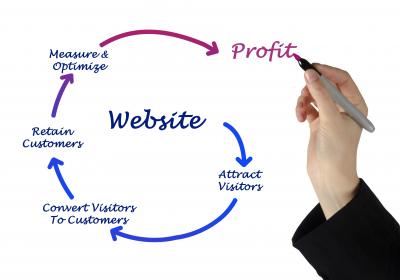Creating A Website That Converts Visitors
Getting visitors to your website isn’t as easy as the “If you build it, they will come” line from “Field Of Dreams.” Seriously, just because you’ve built a website does not mean that people will flock to it, nor does it mean they’ll stick around or give up their contact information to download content. Read on to learn how to create a website for low bounce rates and high conversation rates.
Do I Amuse You?
Your website doesn’t have to be about clowns to get people interested, and you’d turn off potential visitors who have coulrophobia (those with a fear of clowns) if that was the case. However, to get visitors to find your site useful, you need to have content that is engaging and educational. Think about the reasons people visit your website and create content that speaks to those scenarios. For example, if your products are printers, website visitors would find the following pieces of content helpful: a comparison guide of printers; a checklist of how to tell if it’s time for a new printer; and a case study of how your printer improved productivity at an office. Make sure that you’ve gated the longer pieces of content—like the comparison guide and the case study—behind a registration form so you can track who’s interested in your content as a possible lead conversion for your company.
You can also create content that would be suitable for your audience based on the challenges faced by your top buyer personas, including content that covers how to spend less time on tasks that could be automated, or how to sell a boss on the return on investment of a purchase. Now, if you haven’t created your buyer personas, or even know what those are and why you need them, contact us at PartnerDemand and we can help you!
Follow What Works
When you’re creating a website design, your first thought might be to reinvent the wheel and create a design people have never seen before. But, when it comes to website design, you really want to stay with what people know to keep your bounce rates low. Think about it: If you went to a website and the navigation was hidden away in the lower right instead of the upper left and all of the text was underlined to look like a link, but only some of the words were clickable, how much time would you spend on that site? I know I’d bounce off that website within seconds, after taking a screenshot to submit to a Website Hall of Shame site. We’re all used to the nav being in the upper left and only links being underlined and expect that to be the same on all sites that we visit. To do otherwise would create high bounce rates and you certainly couldn’t expect any lead conversion.
How Much Do You Care?
Do you know how important it is to incorporate the user experience (UX) when creating your website? Some 68% of website users give up and bounce off a site because they think you don’t care about their experience. Don’t be a site that looks like you just want to sell, sell, sell, even though that’s your primary purpose. Make sure that you have a UX review of your site during the creation process so you’ll think like a user and see before the site goes live if you’re missing breadcrumbs on each page; don’t have filter capabilities on your online catalog to search by lowest to highest price, for example; or have links that don’t go where they’re supposed to. Yes, this all seems simple, but if you don’t perform UX testing on your site, your visitors will think you don’t care about them and will bail.
Get An “A” In Website Design
Every website page needs a strong Call To Action (CTA) and your site is no exception. Perform A/B split testing during your website design process, and then periodically throughout the course of your website, to determine which CTA performs better. And yes, you can test (and should test) other aspects of your site as well, from what content converts the best to what font generates more interest. You might be surprised to learn that even something as simple as changing a CTA button color from green to orange can generate an increase in website conversions, but it can. However, you won’t know what will work best on your website until you test, so ensure that you incorporate A/B split tests into your UX testing.
Need help generating more leads, figuring out buyer personas, or creating content for your website that will convert? PartnerDemand can help! Contact us to get started today.


